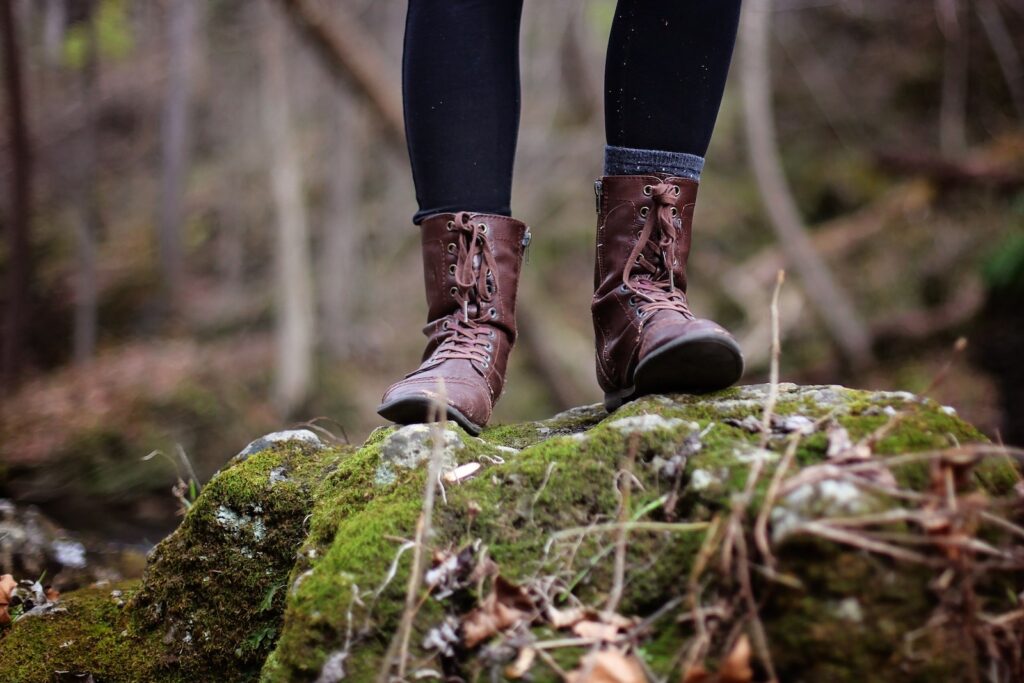

Hiking Boots vs. Snow Boots: Understanding the Differences and Making the Right Choice
Are you planning your next winter adventure and torn between hiking boots and snow boots? Well, fret no more because we’ve got you covered! Whether trekking through snowy mountains or exploring frosty trails, understanding the differences between these two footwear options is crucial in keeping your feet warm, secure, and comfortable.
In this blog post, we’ll unravel the mysteries of hiking boots versus snow boots so that you can make an informed decision for your upcoming escapades. So lace up and get ready to embark on a journey filled with informative tidbits that’ll have you striding confidently through any winter wonderland!
Introduction to Hiking and Snow Boots

outdoor footwear is essential for exploring the great outdoors during colder months. But with so many types of boots on the market, it can be hard to choose the right pair for your needs. Hiking boots and snow boots are two popular choices for winter activities, but they serve different purposes. In this article, we’ll explore the key differences between hiking boots and snow boots to help you make the best decision for your next outdoor adventure.
Hiking boots are designed for walking on uneven terrain, like trails and mountains. They typically have a tough leather or synthetic upper that protects your feet from rocks and other sharp objects. Additionally, most hiking boots have a waterproof or water-resistant coating to keep your feet dry in wet conditions. The soles of hiking boots are also designed for traction on slippery surfaces.
Snow boots, on the other hand, are made for walking in deep snow. They typically have a taller shaft that comes up over your ankle to keep out snowdrifts. The uppers of snow boots are usually made from waterproof materials like rubber or neoprene. Additionally, snow boots often have thick insulation to keep your feet warm in cold temperatures. The soles of snow boots also have deep treads for traction in icy and snowy conditions.
Comparison of Hiking vs. Snow Boots (i.e. Material, Soles, Waterproofing, Lacing)
When it comes to your footwear, making the right choice is crucial for a comfortable and enjoyable experience outdoors. Hiking boots and snow boots both have their own unique benefits that make them better suited for different activities. In this article, we’ll take a closer look at the key differences between hiking and snow boots to help you make the right choice for your next outdoor adventure.
Material: The material of your footwear is important for both comfort and function. Hiking boots are typically made from leather or synthetic materials, while snow boots are often made from waterproof fabric or rubber.
Soles: The type of sole on your boot is also important to consider. Hiking boots typically have thicker soles with deeper treads for traction on uneven terrain, while snow boots have thinner soles with shallower treads that are better suited for walking on snow and ice.
Waterproofing: Waterproofing is another key factor to consider when choosing your footwear. Hiking boots are usually only water resistant, while snow boots are fully waterproof. This means that snow boots will keep your feet dry in wet conditions, whereas hiking boots may allow some moisture to seep through.
Lacing: The way your footwear laces up can also affect comfort and fit. Hiking boots typically have traditional laces that allow you to adjust the tightness around your foot, while snow boots often have elasticized laces that provide a snug fit without needing to be tightly laced up.
Factors to Consider when Selecting Appropriate Footwear
When selecting appropriate footwear for hiking or snow activities, there are several factors to consider in order to ensure a comfortable and enjoyable experience. Basic factors such as climate, terrain, and personal preference should all be taken into account when making a decision. In addition, more specific considerations such as support, insulation, and waterproofing may need to be addressed depending on the activity and conditions.
Climate is perhaps the most important factor to consider when choosing footwear. Hiking boots are typically best suited for dryer climates, while snow boots work better in cold, wet environments. If you live in an area with mild winters and little snowfall, you probably won’t need snow boots very often. However, if you live somewhere that gets a lot of snow and ice, snow boots might be a necessity.
The type of terrain you’ll be encountering is also important to consider. If you’re planning on doing a lot of hiking on rocky trails, you’ll need a boot with good traction and support. Similarly, if you’re expecting to encounter deep snow or icy conditions, you’ll want a boot with enough insulation to keep your feet warm. Waterproofing is also important in wet or snowy conditions.
Personal preference is another key factor when choosing footwear. Some people prefer the extra support and stability of a hiking boot, even in milder climates. Others find snow boots to be more comfortable and easier to walk in. Ultimately, it’s important to choose a boot that feels good on your feet and can handle the conditions you’re expecting to encounter.
Choosing appropriate footwear for hiking or snow activities requires thought and consideration. It is important to factor in climate, terrain, personal preference, insulation, support, and waterproofing to ensure that you get a boot that meets all of your needs. With a bit of research, you should be able to find the perfect match for any adventure.
Tips for Buying Hiking and Snow Boots

If you plan on doing any hiking or snowshoeing this winter, you’ll need to make sure you have the right footwear. Hiking boots and snow boots may look similar, but they serve different purposes and offer different levels of protection.
Here are some tips for choosing the right boots for your needs:
Hiking Boots:
1] Look for a boot with good ankle support. This will help prevent sprains and other injuries.
2] Make sure the sole is rugged and has good traction. You don’t want to slip and fall on the trail.
3] Choose a boot that’s waterproof if you’ll be hiking in wet conditions.
4] If you hike in cold weather, look for a boot with insulation to keep your feet warm.
5] Break in your hiking boots before taking them on a long hike. Wear them around the house or on shorter walks to get them ready for more strenuous activity.
Snow Boots:
1] Snow boots should be made of waterproof materials to keep your feet dry in wet conditions.
2] The boots should also be insulated to keep your feet warm in cold weather.
3] Look for a boot with a good tread pattern to prevent slipping on icy surfaces .
4] Make sure the boots fit properly and are comfortable. You don’t want your feet cramped in tight
footwear while you’re out in the snow.
5] Break in your snow boots before taking them out in the wintry conditions. Wear them around the house or on shorter walks to make sure they’re comfortable for longer hikes.
Maintenance Tips for Both Types of Boots
Assuming you’re taking care of your boots and not using them for rock climbing or trail running, here are some general tips for both types of boots:
-Wipe down/clean your boots after each use. This will help prevent any dirt, debris, or salt from building up and causing long-term damage.
-If they get wet, make sure to dry them thoroughly before storing them away. Wet leather can lead to mildew and deterioration.
-Condition leather regularly. This helps keep the material supple and prevents cracking.
-For snow boots specifically, pay close attention to the insulation and waterproofing. These features can degrade over time and need to be replaced periodically in order to function properly.
Alternatives to Traditional Hiking and Snow Boots
There are a few alternatives to traditional hiking and snow boots that can provide similar levels of protection and function. First, there are insulated boots designed for cold weather activities like hunting or winter camping. These usually have a waterproof outer layer and a thick insulation layer to keep your feet warm in extreme conditions. Second, there are trail running shoes with built-in waterproofing and added insulation for cold weather use.
These can be a good option if you don’t need the extra support and protection of a full-fledged hiking boot or if you’re looking to shave some weight off your pack. There are climbing shoes designed for cold weather conditions that can also be used for hiking. These tend to have very stiff soles for added support on icy terrain and include extra insulation to keep your feet warm.
Conclusion
At the end of the day, choosing either hiking boots or snow boots for your outdoor adventures depends entirely upon the type of terrain and conditions you will encounter. Hiking boots are suited to situations that involve a mix of uneven trails, mud and water while snow boots are designed to provide extra insulation when temperatures drop below freezing.
Depending upon where you plan on walking, understanding which boot is better suited can help ensure maximum comfort during your journey and make sure that you are well-equipped for whatever weather nature throws at you!






